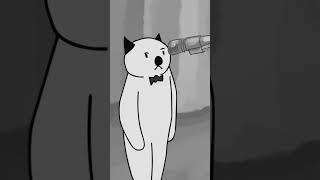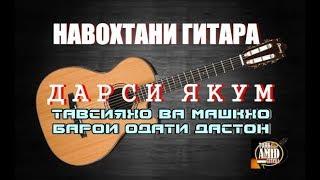
Altered Scale - Make Sure You Learn This First!
Комментарии:

Amazing you made it sound fresh, I thought literally everything was said about altered…
Ответить
And the easiest: Sticking to the bII and bIII triad pairs over V7.
Ответить
This is really helpful. Thanks, Jens. Could you use the Barry Harris chromatic scale over this? For example using his half step approach from the b9 of the dominant to the 5th of the tonic chord
Ответить
Terrific video! Question: why don’t the Bb and B in G7alt resolve to B in Cmaj7, since the major seventh over C is a strong chord tone?
Ответить
I love the altered scale. I probably overuse it. Actually I think of melodic minor as being a mode of the altered scale.
Ответить
For those who want to think in G for the G altered scale (rather than Ab melodic minor or Db lydian dominant) if you know the G major scale you simply flat every note but the root. This gives you root, b2, b3, b4, b5, b6 and b7. All the same notes without having to transpose or think of modes!
Ответить
Great, thanks. I def have to work on this.
Ответить
Why is it that every one of your videos seems to hit me right when I need it? I've just been working on the melodic minor scale. I even started writing a song called "Guemenmêl" (acronym for G melodic minor in Portuguese, i.e. guê menor melódica) because it started with G minor triad to E minor triad and that mapped to the G melodic minor scale (sort of, E minor sounds really close to E half diminished following the G minor), which would be F altered I guess.
Ответить
Rules?! WTF....
Ответить
Ab melodic minor doesn't have a 'B'...it has a 'Cb'...yes I know they're the same thing, but that's the point, right? It's why it works as a way to solo over G7alt.
Ответить
Jens the thing I noticed on your notes in the G atl scale the notes are the same as a A flat scale.
Which has 4 flats .

Or major pentatonic, a tritone away… so G7alt as Db major pentatonic.
Ответить
Lydian dominant can be used on non functional dominant. Over functional to resolve to 1 altered is better
Ответить
Great video Jens
Ответить
Just learn all m6 arpeggios on the fretboard. If you see G7, play Abm6 anywhere and you're good for the key of C. You get the b9, 3, b13 and 7 of G7.
Ответить
I have one question:when you write a 2/5/1as five part harmony the flat thirteenth does not resolve to the third but to the ninth and I have learned that all tones which are a semitone apart can resolve to each other my question: is it absolutely impossible to resolve the flat thirteenth to the ninth in solos,I have tried this of course and I do not think this sounds bad
Ответить
The third is Cb .
Ответить
This-was-just-what-I-was-looking-for-T-Y-Very-Much.
Ответить
Thanks Jen.
Is this in your Adv. Jazz Guitar Concepts book?

I always called this the diminished whole tone scale. :)
Ответить
Jens, You are a wonderful teacher. I’m a piano player and I have no trouble applying your lessons to my playing.
Ответить
Thank you so much for all these tips Jens ! Someone once told me that the altered scale is so special that playing up/down the scale towards an upcoming chord tone is, "in itself", already kind of a lick. Do you think this is true to some degree, and/or can be used as a way to get into the altered scale sound at first ?
Ответить
Very helpful. I know the scale itself, but utilizing it has been a bit difficult. Though I can hear it sometimes now, and this video will only help me progress with that!👍
Ответить
I like this video. This is very good, like the one on drop two voicings. These are your two most informative videos. I need to find the one on Barry Harris you did on pivot arpeggios. I think it is as valuable.
Ответить
Excellent, Clear. A Game Changer!
Ответить
I just think of it as the Dorian mode with a raised 7 and move it up a semitone. Got the idea from Pat Martino. Works for me. (A lot of the old guys didn't even bother to raise the 7, just played A flat dorian).
Ответить
I think the #11 and b13 sound good resolving to the 9th of the one chord as well.
Ответить
Aw man, I never got through the meta approaches well explained here. Things clicked just thinking of a dominant seventh arpeggio envisioning the fifth as replaced by both b5 and #5.
Another view on the same is a dominant seventh shell voicing with b9/#9 and b5/#5, no 4, and no 6.
As Jens knows from his time in the cabin with the una… erm, guy, so much of this was taught in the eighties with modal, this is that, super lochrian, diminished whole tone, start the melodic minor on the leading note… It’s a wonder any of us made it out alive.
Even its formal spelling as every note in the scale flatted belies its essential nature.
Extra spicy dominant. R 3 b7 with pairs of altered notes fleshing out the skeleton.
Sigh. My two cents. Lovely video, and I always like discussion of resolutions!
Cheers Jens, all! Best, D (altered?)

I never realized how much jazz there was in the scene breaks in Beverly Hillbillies 😂
Ответить
Great lesson! I've noticed that Pat Martino uses the maj7#5 arpeggio a lot in his solos; usually played descending.
Ответить
This is a nice short cut for guys like me. I'm more of a blues player who likes to incorporate jazz sounds into my playing. Of course I'm using mainly unaltered dominant chords (9's and 13's) and I am familiar with the Lydian Dominant shapes and patterns. Now if I do encounter an altered chord, instead of trying to shift my brain over to "what is that altered pattern again?", I can just play my Lydian Dominants a tritone up. I'm surprised I didn't see it before. Thanks
Ответить
So both the Db7 and Eb7 dominant pentatonic scales would work over the G7alt chord.
Ответить
Thanks!
Ответить
That sounds like jazz Jens. I'm all about this.
Ответить
Thanks for sharing, you have opened my mind. 🎸
Ответить
This is really a great lesson. I need to come back to it. Thank you!
Ответить
It's like you read my mind!! I'm learning to integrate altered scale into my playing and it's been rough.
The rule number 1 does unlock something for me :) It starts to sound right.

great video thanks
Ответить
So technically, there are 4 notes which give the altered dominant its characteristic color, apart from the root, 3rd, and 7th of the G7.
I think the main area of interest for me is in the wholetone segment from the B to the G.
That's the forlorn sound I get from melodic minor.

I've really been trying to find an "easy" was to incorporate altered lines into my playing. All of the rules mentioned here are EXTREMELY helpful (especially the rules about resolutions; bebop style enclosures have never seemed to work for me, and the idea of linear motion toward the resolving point is a terrific one)! Another great point ( and I think this is from one of Jens' lectures on superimposed pentatonics) is to try the good ol' minor pentatonic "box" shape starting from the b3 of the Valt chord. This will give you the b3, b5, b6, b7, and b9 notes, and you can expand from there to create resolutions or more melodic structures. A neat trick!😊
Ответить
Was Uffe Steen your teacher?
And as always, great video!

Great lesson. Thank you. I will be watching this again. This is exactly what I need to become familiar with. ❤
Ответить
Playing the altered scale over key centered backtracks is okay, if it's done for the sole purpose of ear training on how to realize the structure of the scale, right? Or, in your view is this going down the wrong path?
Ответить
really inspiring ,I think I have been more and more into the altered/HW diminished things since I first knew them back in 2013 Thank you
Ответить
This stuff is in Jens’ book. The book is great. 😊 👍
Ответить
I have gotten so much out of these videos.. since everything presented is to the point, and relatively easy to implement - assuming of course one is far enough in their guitar journey and has the fundamentals down. For me, just a few of Jen's vids have really expanded my limited jazz playing! Well done! Especially the diatonic arpeggios vid. I've studied Joe Pass for the last 15 years and am amazed how much diatonic arpeggio movements are in Joe's playing .. and ultimately in mine!
Ответить
Jens this is such a meaty lesson, there's so much useful and cool info in here. This'll keep me busy for months. Thanks man.
Ответить

























